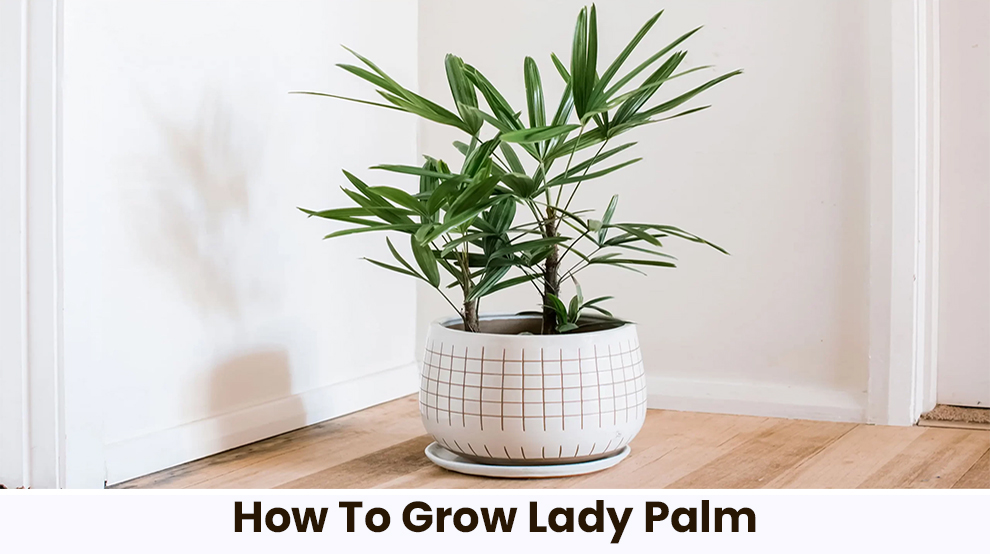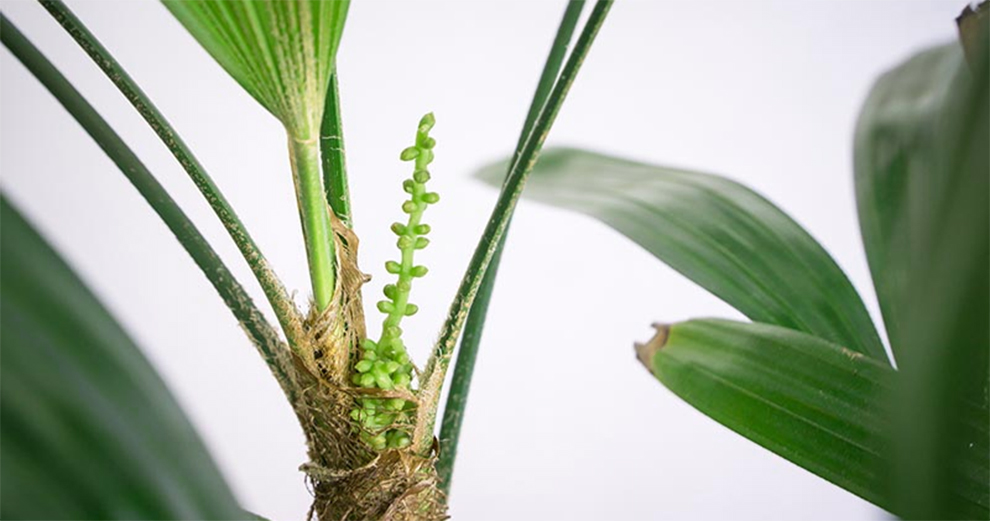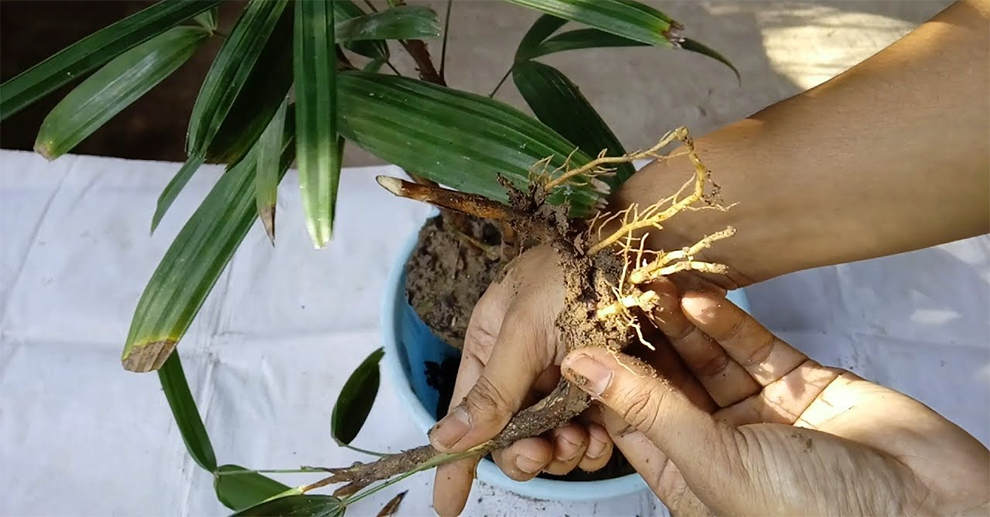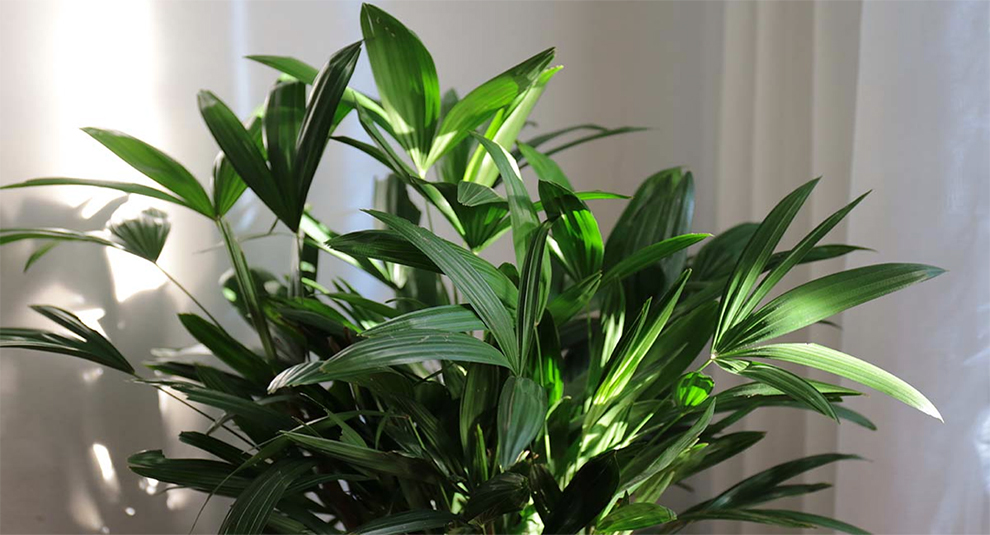How To Grow and Propagate Lady Palm: 3 Methods
The best and safest way to grow a lady palm is to buy a live plant online or from a nearby nursery. However, you can also propagate them through seeds, stem cuttings, and division.

Lady Palm, or Rhapis Excelsa, is a relatively less popular indoor houseplant. Its slow-growing, high-price nature does put a few people off. But, in all honesty, Lady Palm is one of the top contenders in the easiest indoor palms to grow, provided you are acquainted with the drill behind how to grow Lady Palms.
With their sturdy and upright canes, they are forgiving and hardy. They can even endure low-light or drought conditions. Hence, they are the perfect pick for new plant parents.
When planting a lady palm, you must settle your Palm at the same depth as in the nursery container and fill the hole with soil. Ensure that you grow it in well-draining soil enriched with compost. Lady Palms love crowded roots. Press the topsoil gently with your hands to eliminate any bubbles, and water the plant.
If you like a plant with a tropical appearance and an unusual growth habit, you cannot have a better alternative than the Lady Palm for your household.
Lady Palm’s roots and stems are vigorous and can put up with minimal care sans any adverse effects. Read below as we discuss the different ways to grow Lady Palm.
Lady Palm Growing Guide
| Hardiness zone | Nine through Eleven |
| When to plant | Ideally, plant them during the growing season, which is in the spring and summer. But if you live in a region with mild winters, you can also plant Lady Palm in the fall or winter. |
| Seed planting depth | Two to three times their diameter – approximately 1/4 inch. |
| Plant growth rate | Slow-growing plant – 6-10 feet (1.8-3 meters) tall, with a spread of 4-5 feet (1.2-1.5 meters), but it takes almost a decade to reach this size. |
| Soil | Loamy, well-drained soil with neutral to acidic pH |
| Sun | Partial, shade |
| Water | They have average water needs and can withstand drought once established. During summer and spring, when the plant’s active growth is happening, water anytime the topsoil feels dry, but reduce watering in fall and winter. |
| Pests | No serious issue, but regularly inspect for scale and spider mites. |
How to Plant and Grow Lady Palms?
Lady Palm is a beautiful landscape specimen. It enjoys morning sun or dappled light and does best in well-draining soil. You can plant the Lady Palm near the property line and employ it as a living screen or grow it alongside the composting area or garage to block the view.
These hardy plants grow best in USDA hardiness zones nine through eleven. Known for their rich texture, the Lady Palms can be a beautiful accent plant for growing indoors. You can opt for dwarf species of these indoor palms like Rhapis gracilis.
You can plant the Lady Palm shrub in zones nine through eleven at any time of the year. But if you reside in colder regions, grow the plant in a container in spring once the last frost is over. Do not forget to move them indoors before the first frost in the subsequent fall.
If you buy a live plant, remember, you need to plant your Palm trees in a hole two times as wide as the nursery container and only a few inches deeper.
Broadly speaking, you have three ways to grow the Lady Palm. Let us discuss them one by one:
A. How To Propagate Lady Palm From Seeds?

Growing Lady Palm from seeds is pretty straightforward. However, it can take longer for the seeds to germinate and mature into a full-growth plant. Here are the steps you need to follow:
- Buy viable, fresh Lady Palm seeds from a seed supplier or a reputable nursery or online.
- Soak these seeds in warm water for a day. It softens the hard outer shell and helps with germination.
- Fill the small pots or seed tray with well-draining soil. Add a mix of sand or perlite and peat moss to it.
- Sow the seeds about half an inch deep into the soil.
- Cover the seeds with a thin layer of soil.
- Water the soil to keep it moist but not soaking wet.
- Cover the seed pot or tray with a plastic wrap or bag to create a humid environment.
- Move this pot or tray to a spot with bright but indirect sun.
- Inspect the soil moisture regularly and water as required to keep the soil moist. Be judicious and do not overwater, as it can result in rot and fungal growth.
- In four to six weeks, the seeds will sprout and begin germinating.
- After the seedlings have grown some leaves, you can transplant them into individual pots filled with well-draining soil.
- Continue caring for the seedlings by exposing them to filtered, bright light, and keep the soil moist but not waterlogged.
- After the seedlings mature and grow some stems, you can transplant them into the larger containers or grow them in the growth.
You need ample attention and patience to grow Lady Palm from seeds. However, if done right, it can be a rewarding process. Your Lady Palms will thrive beautifully in your garden or home with sufficient attention and care.
Check this out to know how to care for your indoor palm trees.
B. How to grow Lady Palm From Cutting?

You can propagate the Lady Palm or Rhapis excelsa from cuttings. However, it is not the most prevalent method of propagation. Here is what you must do to grow Lady Palm from cutting:
- Pick a mature and healthy Lady Palm with several canes or stems. Select a cane about six inches long with several leaves annexed to it.
- Cut the cane at a forty-five-degree angle using sterilized, sharp scissors or knives. Ensure you cut just below the node or where the leaf is annexed to the cane.
- Take a small pot and fill it with well-draining soil. Add sand or perlite and peat moss blend to it.
- Dip the cane’s cut end in a rooting hormone powder to stimulate root growth.
- Form a tiny hole into the soil and insert this cutting into the soil, ensuring at least one node is buried underneath the soil.
- Water it until the soil is moist but not soggy.
- Cover the container with a plastic bag to establish a humid environment.
- Keep this pot in a bright spot where it gets indirect sunlight.
- Keep the soil moist and mist the leaves occasionally.
- After a few weeks, the cutting will stimulate new growth, indicating that it has rooted successfully.
- After the new growth matures, you can transplant the Lady Palm into a bigger pot or move it into the ground.
Growing Lady Palm from cuttings is usually tricky, and not every cutting will trigger new growth. But it is not impossible. You have better chances of achieving success with due attention and care.
C. How To Grow Lady Palms From Division?

Typically, growing Lady Palm from the division is an effective and popular propagation method. Here are the steps you need to follow:
- Choose a mature and healthy Lady Palm with several canes or stems. Select a plant that has outgrown the pot and is ready for division.
- Remove the plant from the container and shake off the excess soil from the roots.
- Look for natural division or separate the canes or stems into smaller sections.
- Using sterilized scissors or knives, cut the thick roots.
- Each section must have several canes or stems and a healthy root system.
- Plant the section into its pot containing well-draining soil. Ensure that the soil level is at par with the original planting depth.
- Water the soil well, leaving it moist, not waterlogged. Continue watering regularly to keep the soil moist but not soaking wet. Apt watering will help the roots establish themselves.
- Move the newly potted Lady Palm to a spot that receives filtered, bright light, but do not put it under direct sun.
- Keep your new plant away from cold temperatures and drafts. Lady Palm grows best in humid and warm conditions.
- Fertilize your plant with a balanced feed once a month during the growing season during summer and spring.
- After a few weeks, the new growth will show, indicating the Palm has rooted successfully and established well.
Propagating by division is undoubtedly one of the easiest and most effective ways to grow Lady Palm. It gives you multiple plants from a single plant, and you can do it at any time of the year.
Lady Palm will thrive and add beauty to your garden or home with proper attention and care. You can also choose from other garden palm varieties if lady palm isn’t your pick.
Maintaining The Lady Palm After Planting
Lady Palms can flourish in any room, provided you place them near a bright window with indirect light. They do not have overly complex care, but you must establish a regular feeding and watering routine.
Here are some tips that can help:
A. Sunlight requirement
Lady Palm does not appreciate the direct sun. The unfiltered sun can result in leaf burn in the Palms. So, pick an area that receives dappled light if planting outdoors. Lady Palm can also tolerate a shady spot. But if you grow the Lady Palms indoors, you must place your container near a window that receives indirect light.
B. Ideal soil
Lady Palms love soil with good drainage. When you plant them in pots, use a good potting mix exquisitely designed for the Palms.
C. Temperature
Lady Palms can grow well at typical room temperatures between 60 and 80 degrees Fahrenheit. During the colder months, you must ensure that your plant grows in temperatures over 55 degrees Fahrenheit, as temperatures lower than this can damage the plant.
Simultaneously, take active measures to shield the plant against cold drafts and blowing hot air (air ejected from the heating vent), as that can dry the plant.
D. Humidity
Lady Palm prefers humidity of at least fifty percent or more. The plant might develop brown leaf tips if the humidity is too low. So, to amplify the moisture levels for the plant, you must mist the Palm with water using a spray bottle.
Alternatively, you can keep your Palm on the tray of pebbles full of water, ensuring that the pot is not sitting directly into the water as that may lead to root rot.
E. Watering
Lady Palms are usually not very thirsty. They have average watering requirements and can endure drought after they achieve maturity. During summer and spring, the plant is in the actively growing stage.
So water it anytime the topsoil feels dry. But in winter and fall, you can reduce the watering frequency and water only when the top two inches feel dry.
F. Fertilizer
The right knowledge of how to propagate Lady Palm will allow you to have multiple plants from a single one. However unhealthy plants are not meant for propagation. So, you must feed your Lady Palm during the growing season to keep them healthy.
Ideally, you can fertilize the Palms monthly from April to September with a liquid houseplant fertilizer diluted to 50 percent strength.
G. Pruning
Lady Palm (Rhapis excelsa) is a slow-growing plant that requires minimal pruning. However, occasional pruning is necessary to remove dead or yellowing fronds, improve air circulation, and maintain the plant’s shape and size. While trimming, use clean, sharp pruning shears or scissors to prevent damaging the plant or spreading diseases.
H. Repotting
Lady Palm does not hate being cramped in the container where it grows, but you must pick a pot bigger than its root ball. In addition, ensure that the container has enough drainage holes.
You can repot the Lady Palm every alternate year in spring into a container that is relatively bigger than the current one. To do so, lift the roots off the container, ensuring you disturb them as little as possible.
Through the process, be cautious and keep the root ball intact. Now, place the Lady Palm into the new pot and fill it with a fresh potting mix. Pack the soil gently with it and water thoroughly.
